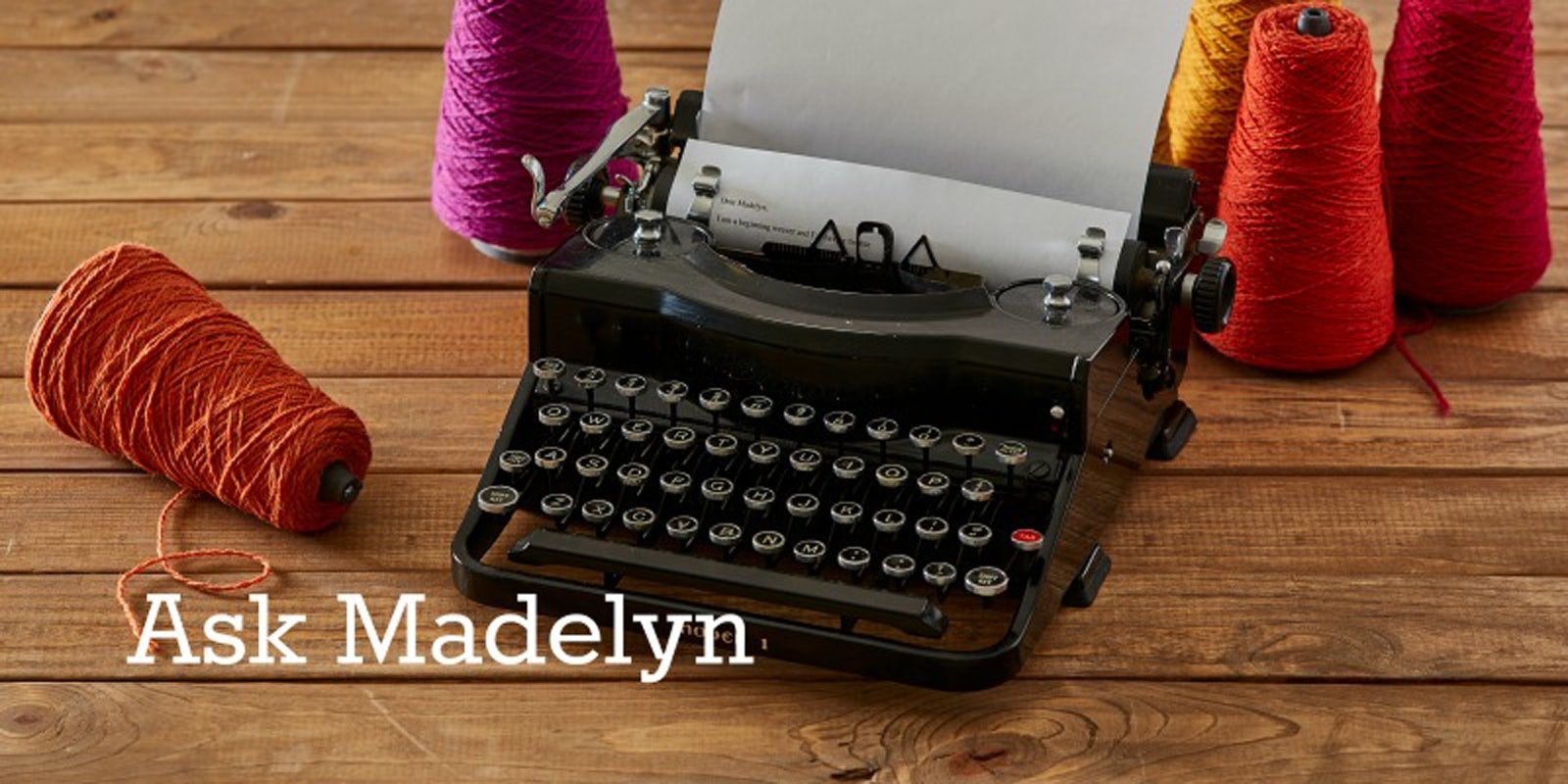Hi Madelyn!
I typically warp my loom front to back. However, lately I've been planning some projects that require much longer warps (8+ yards). I was told that if you are planning a long warp that it is best to warp a floor loom back to front because it allows you to get a tighter, more even warp.
Could you offer some thoughts on this theory?
—Kathryn
Hi Kathryn!
There are several reasons that might make you choose back to front over front to back, but tight and even beaming is not one of them.
The difference between the two methods is mostly in the order of the steps you take. Back-to-front warping requires a tool you don't use in front to back: the raddle.
Back to front
- Wind the warp with the cross at the bottom end (or whichever end allows loops around the end peg nearest the cross).
- Insert lease sticks in the cross, place the back apron rod in the loops, and spread the warp in the raddle, which is secured to the loom (can be in several locations).
- Beam the warp.
- Thread the shafts sitting at the front of the loom, taking warp ends from the lease sticks.
- Sley the reed.
- Tie the warp onto the front apron rod.
Front to back
- Wind the warp.
- Secure the cross and tie a choke that you will secure to the front beam of the loom.
- Sley the reed (either at the loom or at a table), with lease sticks or your fingers in the cross.
- With the choke tied to the front beam, thread the shafts taking the warp ends in order from the reed and sitting behind the shafts.
- Beam the warp.
- Tie the warp onto the front apron rod.
Reasons to choose back to front:
If it is more comfortable sitting at the front of your loom for threading. If the sett requires several ends per dent in the reed (threads can twist around each other in the dent in front-to-back warping, making beaming difficult unless the cross is transferred to the threading side of the reed).
Reasons to choose front to back:
If it's more comfortable sitting at the back of your loom for threading. If the warp consists of different colors or different yarns: You can wind each color/ yarn separately (sleying each separately) instead of starting and ending threads at the warping board.
The only factor that affects even and firm tension on the beam is your beaming method, whether you are warping back to front or front to back.
—Madelyn
If you have a weaving question please email Madelyn! View related & recent "Ask Madelyn" posts!

